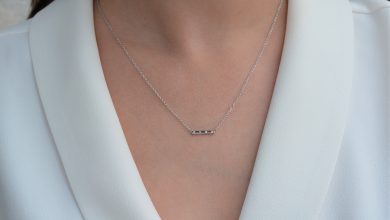Unveiling the Hidden Lives of Cremation Urns
Unearthing the Mysteries: Unveiling the Hidden Lives of Cremation Urns

Unearthing the Mysteries Unveiling the Hidden Lives of Cremation Urns Cremation has been practiced for thousands of years, and with it comes the tradition of using cremation urns to store the remains of loved ones. The origins of cremation urns can be traced back to ancient civilizations such as the Greeks and Romans who believed in honoring their deceased by keeping their ashes close. These early urns were made from various materials including clay, bronze, and even precious metals like gold. Each urn was intricately designed and often adorned with intricate carvings or engravings that symbolized aspects of the person’s life or beliefs. One fascinating origin story is that during ancient Greek times, cremated remains were stored in amphorae-shaped urns known as lekythoi cremations urns.
Cremation urns through the ages.
Cremation urns have a rich and captivating history that stretches back thousands of years. From ancient civilizations to modern times, these vessels have played a significant role in honoring the deceased and providing a final resting place for their ashes. Exploring the fascinating origins of cremation urns allows us to gain insight into how different cultures approached death and memorialization.
The practice of using urns for cremated remains can be traced back to ancient civilizations such as the Egyptians, Greeks, and Romans. In Egypt, elaborate funerary practices were carried out to ensure a smooth transition into the afterlife. The ashes of the deceased were carefully preserved in intricately designed urns made from materials like alabaster or pottery. These vessels often featured intricate engravings or hieroglyphics that represented the person’s life achievements or provided guidance for their journey beyond death.
Ancient Origins: The birth of cremation urns.
Cremation, the process of reducing a body to its basic elements through intense heat, has been practiced for thousands of years. However, it wasn’t until ancient civilizations began using cremation urns that this practice truly transformed into a ritualistic and meaningful tradition. The origins of cremation urns can be traced back to ancient cultures such as the Egyptians, Greeks, and Romans.
In ancient Egypt, mummification was the primary method used to preserve the dead. However, as time passed and resources became scarce, cremation became more prevalent. Cremated remains were then placed in specially designed containers called funerary urns. These early versions of cremation urns were often made from materials like clay or stone and intricately decorated with symbols representing life after death.
Cultural Significance: Cremation urns across different societies.
Cremation urns have a long and rich history that stretches back thousands of years, with diverse cultural significance across different civilizations. The practice of cremating bodies and preserving the ashes in urns has been observed in various ancient cultures, including Ancient Egypt, Greece, and Rome. In these societies, cremation was seen as a sacred ritual associated with honoring the deceased and ensuring their journey to the afterlife.
Ancient Egyptians believed that preserving the body after death was essential for a successful transition into the next world. They meticulously embalmed and preserved bodies before placing them in elaborately decorated urns made of materials such as alabaster or gold. These ornate urns were often adorned with hieroglyphics and symbols representing religious beliefs, emphasizing their spiritual significance.
Evolution of Design: From simple to intricate urns.
Cremation urns have a rich and fascinating history that dates back thousands of years. The evolution of their design is a testament to the changing beliefs and cultural practices surrounding death. From simple vessels to intricate works of art, cremation urns have become much more than just containers for ashes.
The earliest known cremation urns were fairly basic in design, often being made from clay or stone. These early urns served a purely functional purpose, providing a vessel in which to store the remains of loved ones. However, as time went on and civilizations developed more complex beliefs about the afterlife, the designs of these urns began to evolve. Elaborate motifs depicting religious symbols or scenes from mythology started to appear on the surface of these vessels. As societies became more advanced, so too did their craftsmanship and artistic capabilities.
Modern Innovations: Contemporary cremation urn options.
Cremation has been practiced for thousands of years, with evidence dating back to ancient civilizations such as the Greeks, Romans, and Egyptians. However, it wasn’t until modern times that cremation urns began to be seen as more than just vessels for holding ashes. Today’s contemporary cremation urn options showcase a fascinating blend of tradition and innovation.
Modern innovations have transformed cremation urns into stunning works of art. From sleek and minimalist designs to intricate and personalized creations, these urns now serve not only as a final resting place but also as beautiful tributes to loved ones. With advancements in technology, it is now possible to customize urns with engravings, photographs, or even 3D-printed replicas of cherished memories. Furthermore, contemporary cremation urn options offer various materials beyond traditional choices like ceramic or metal.









